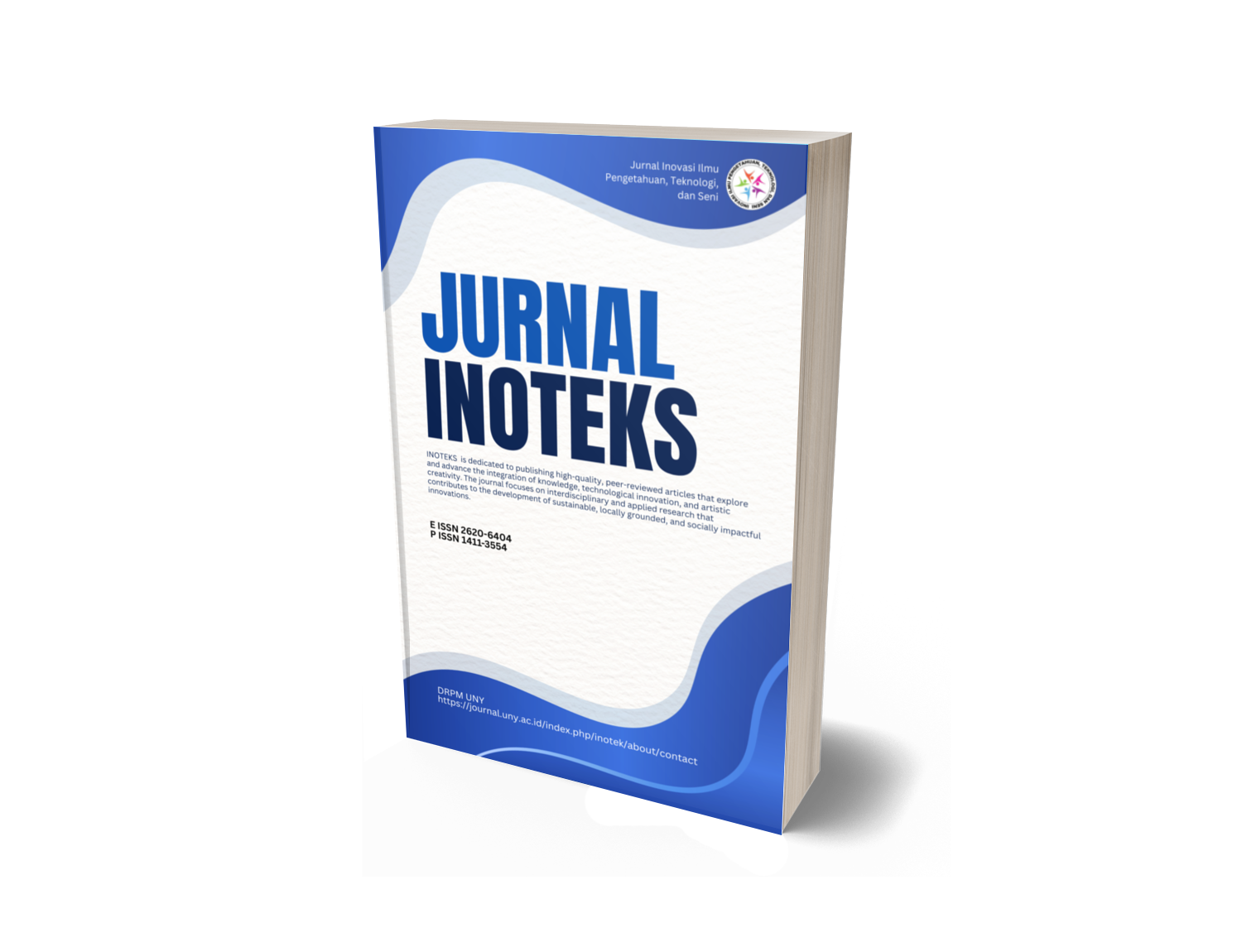PEMBERDAYAAN PETANI MELALUI PELATIHAN DAN PENDAMPINGAN KKN UNTUK PENINGKATAN PRODUKTIVITAS BAWANG MENGGUNAKAN AUDIO BIOHARMONIC SYSTEM SEBAGAI STIMULATOR PERTUMBUHAN ALAMIAH BERBASIS FREKUENSI BINATANG LOKAL
DOI:
https://doi.org/10.21831/ino.v18i2.3067Abstract
PPM - service learning activities aims to apply the results of research ononion crop productivity improvement as a strategic horticultural productsthrough bioharmonic audio system design as a natural growth stimulator frequencybased local animals. Particular purpose, are: (1) promote environmentallyfriendly technologies are cheap and can improve productivity and speed upthe onion crop harvest through community service in bukent corruption so thatthe resulting field of audio engineering and modification technologies bioharmonicsystem; (2) for the region contribute to community development programsPPM - based service learning fun and have significant benefits for students,the community and onion farmer partners; (3) obtain accurate data on theuse of variable frequency acoustic waves and sound intensity level that hasspecial characteristics for onion crop, thus increasing the productivity of onionbased indicators of yield and growth rate of onion plants from the aspects ofmorphology as well as shorten the harvest period.The design activities used are workshops and assisting in the creationand application of appropriate technology bio- harmonic audio source (ABH)with variable audio frequency change (f) 2000 Hz - 5000 Hz sound intensityand extent of 0 dB - 120 dB corresponding to the growth and onion crop productivity.Electronic circuit blocks including the source ABH SWG (SquareWave Generator) which form an astable multivibrator to produce a squarewave. Number 7 SWG that each - each issued a fundamental frequency of 2000Hz, 2500 Hz, 3000 Hz, 3500 Hz, 4000 Hz, 4500 Hz, and 5000 Hz.Activities undertaken in KKN - PPM has been able to realize these threeobjectives defined above which has managed to popularize the system bioharmonicaudio technology to increase productivity and accelerate the onion cropharvest through community service in the form of corrupttion.Percentage ofteam activities and the servants of corruption student activities that occur duringthe training process. Percentage of team activities devotees ranged from 10.5%to 35.5%. The most dominant team activity is explained training materials,namely 45% and 10% seek additional examples.while the activity is at least 4% provide feedback and to engage actively stimulate 5%. While the servicelearning student activity dominated by Listening/ attention explanation of theteam coach or student else CCN 40% and at least 50% is to ask questions andwrite down the things that are important 10%.
Downloads
Published
2014-08-01
How to Cite
Nur Kadarisman, E. W. A. P. (2014). PEMBERDAYAAN PETANI MELALUI PELATIHAN DAN PENDAMPINGAN KKN UNTUK PENINGKATAN PRODUKTIVITAS BAWANG MENGGUNAKAN AUDIO BIOHARMONIC SYSTEM SEBAGAI STIMULATOR PERTUMBUHAN ALAMIAH BERBASIS FREKUENSI BINATANG LOKAL. INOTEKS: Jurnal Inovasi Ilmu Pengetahuan,Teknologi, Dan Seni, 18(2). https://doi.org/10.21831/ino.v18i2.3067
Issue
Section
Articles
Citation Check
License
- Authors certify that the work reported here has not been published before and contains no materials the publication of which would violate any copyright or other personal or proprietary right of any person or entity.
- Authors transfer or license the copyright of publishing to Jurnal Civics: Media Kajian Kewarganegaraan to publish the article in any media format, to share, to disseminate, to index, and to maximize the impact of the article in any databases.
- Authors hereby agree to transfer a copyright for publishing to Jurnal Civics: Media Kajian Kewarganegaraanas a Publisher of the manuscript.
- Authors reserve the following:
- all proprietary rights other than copyright such as patent rights;
- the right to use all or part of this article in future works of our own such as in books and lectures;
- use for presentation in a meeting or conference and distributing copies to attendees;
- use for internal training by author's company;
- distribution to colleagues for their research use;
- use in a subsequent compilation of the author's works;
- inclusion in a thesis or dissertation;
- reuse of portions or extracts from the article in other works (with full acknowledgement of final article);
- preparation of derivative works (other than commercial purposes) (with full acknowledgement of final article); and
- voluntary posting on open web sites operated by author or author's institution for scholarly purposes, but it should follow the open access license of Creative Common CC BY-NC-SA License.









